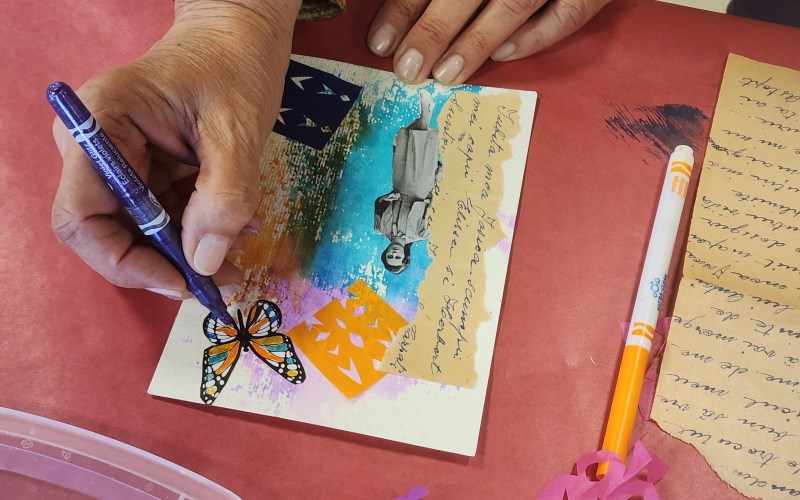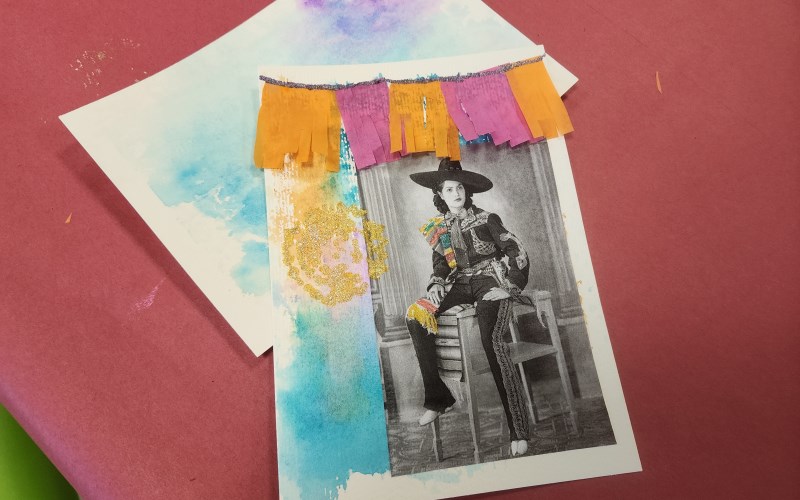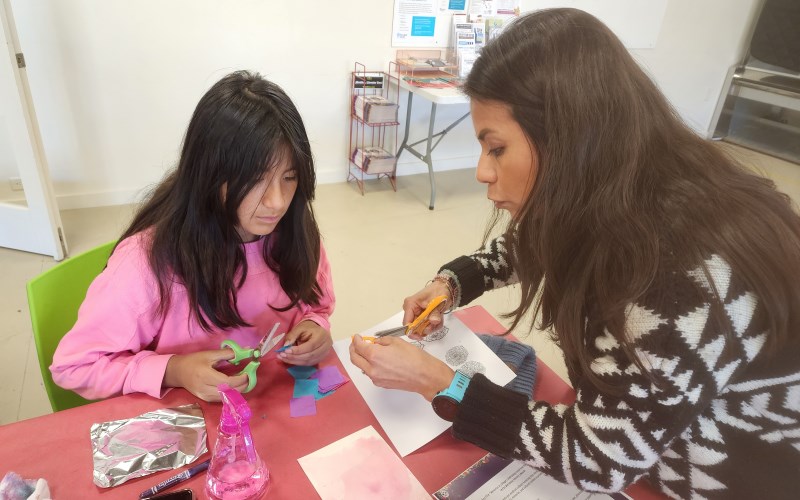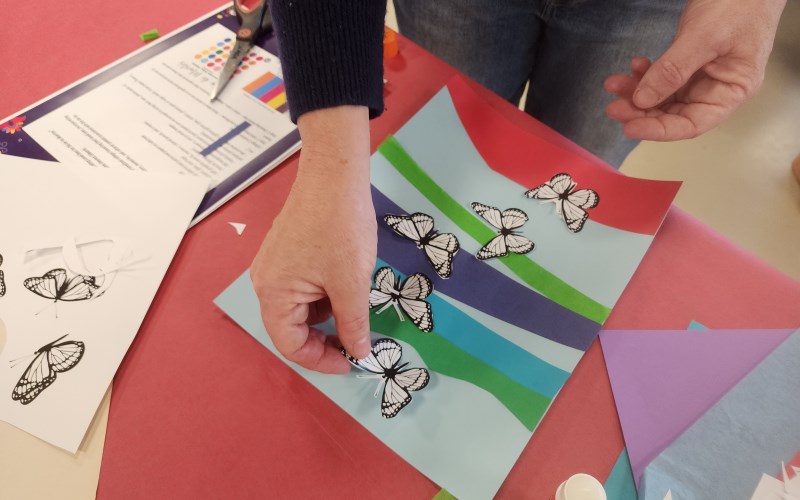|
STORY AND PHOTOS BY KAREN BOSSICK Marianna Jimenez Edwards’ grandfather spent his life in Mexico, never coming to the United States. Elissa Kline’s mother was born in Romania but fled to Israel during World War II, eventually marrying and coming to New York City, then Los Angeles. The two women grew up experiencing very different heritages and cultures. But on Saturday the two shared a table, Magic Markers and other art supplies as they created Memory Collages honoring their loved ones. “It’s a way to remember where we came from and a way to honor our ancestors,” said Edwards.
|
|

Elissa Kline works on a Memory Collage using part of a letter her mother wrote. She lamented she had not brought a picture of her mother but noted that the women in the photograph she used exuded her mother’s elegance.
|
|
|
Edwards taught the Memories in Collage workshop as part of the Sun valley Museum of Art’s annual Dia de los Muertos celebration held Saturday at The Hunger Coalition in Bellevue. Edwards showed participants, including such youth as Sloane Giorgi and Rous Rudas Estrada how to incorporate personalized collages that incorporate elements reflecting family history, memories and cultural symbols using magazine images, family photos, stencils, and decorative elements like glitter, tissue paper flowers and stickers. Kline started hers by coloring a piece of aluminum foil with Magic Marker, then spraying it with water before pressing the foil into her canvas, allowing the color to transfer. She glued part of a letter her mother had written onto the page. She created a small papel picado by folding a small piece of tissue paper into quarters and cutting out a design before opening it up and gluing it to the paper. And she added a butterfly, coloring it with different colors.
|
|

Jennifer Wells Green, the executive director of Sun Valley Museum of Art, made this collage using a photograph of a Mexican charro, or cowgirl.
|
|
|
“I wish I had thought to bring a photograph of my mother,” she said, settling instead for a photograph of a Mexican woman. “She was an elegant but formidable woman—a curator for whom art was everything. I have boxes and boxes of her letters.” Kline is an artist in her own right, perhaps best known for the hundreds of photos she took of the wild horses of Idaho. Her eye has always been drawn to patterns, shapes, colors, lights and shadows. “I especially took this workshop to see if there would be any new techniques and I found one in the aluminum foil trick,” she said. Edwards told how her grandfather had moved to Mexico City after his father died. There, he cared for his mother and sister. He married Edwards’ grandmother when he was 25 and eventually made a career for himself working at the Bank of Mexico.
|
|

Daniela Rudas Estrada helps Rous Rudas Estrada as they begin work on their Memory Collages.
|
|
|
“My parents were born in Mexico and immigrated to the United States in the 1970s where my father was a doctor and my mother a biologist working for a hospital. I was born in El Paso and ended up in Milwaukee, Wis., and Florida before I married and moved to Idaho,” she said. Though living in the United States, Edwards periodically got to visit her grandfather in Mexico City where he played basketball with her and showed her woodworking. “I make these collages to honor my ancestors—something we do every year during Dia de los Muertos,” she said. “Dia de los Muertos used to last as long as 40 days—now it’s just two days. It reminds us that there’s a duality in life and it reminds us to remember where we came from.”
|
|

Courtney Gilbert based this butterfly collage on a portrait of her grandmother.
|
|
|
|